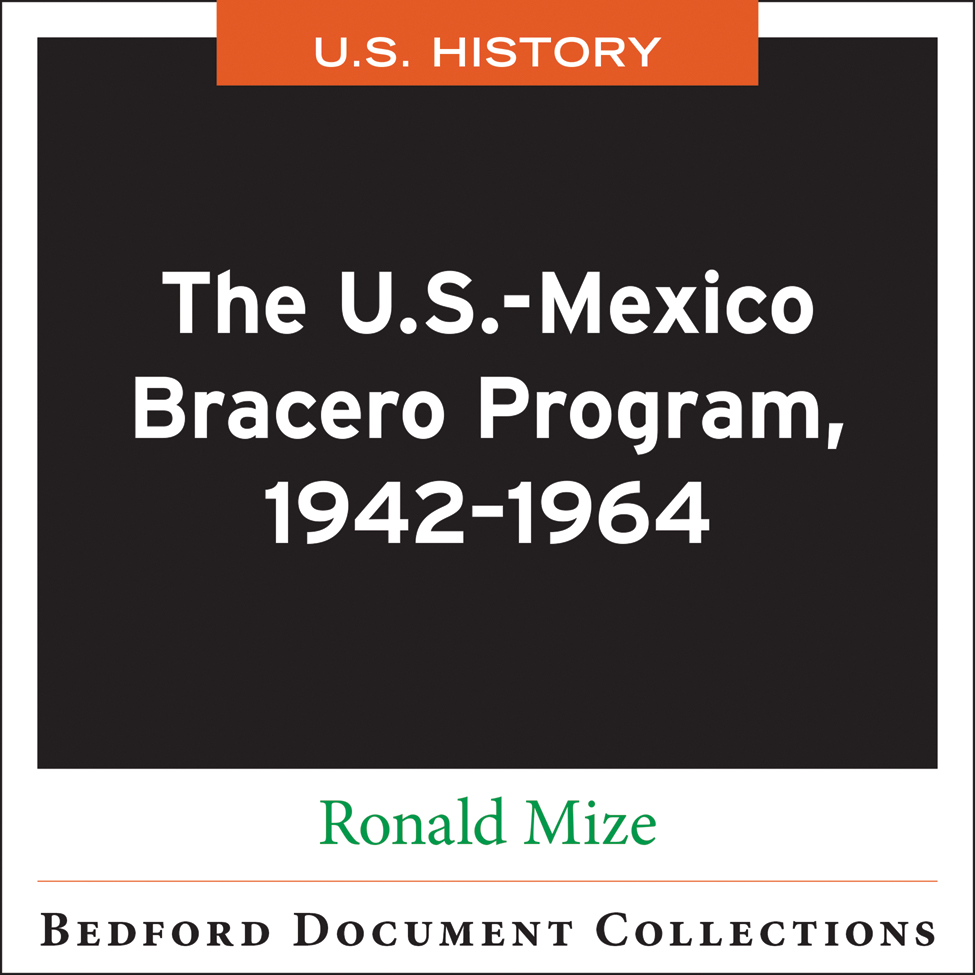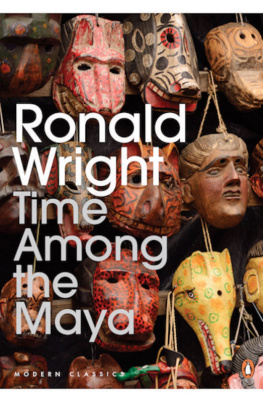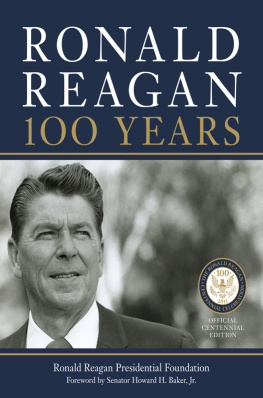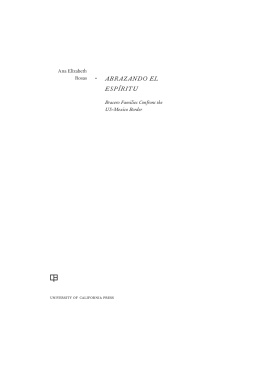Ronald Mize - The U.S.-Mexico Bracero Program, 1942–1964
Here you can read online Ronald Mize - The U.S.-Mexico Bracero Program, 1942–1964 full text of the book (entire story) in english for free. Download pdf and epub, get meaning, cover and reviews about this ebook. year: 2020, publisher: Macmillan Higher Education, genre: Politics. Description of the work, (preface) as well as reviews are available. Best literature library LitArk.com created for fans of good reading and offers a wide selection of genres:
Romance novel
Science fiction
Adventure
Detective
Science
History
Home and family
Prose
Art
Politics
Computer
Non-fiction
Religion
Business
Children
Humor
Choose a favorite category and find really read worthwhile books. Enjoy immersion in the world of imagination, feel the emotions of the characters or learn something new for yourself, make an fascinating discovery.

- Book:The U.S.-Mexico Bracero Program, 1942–1964
- Author:
- Publisher:Macmillan Higher Education
- Genre:
- Year:2020
- Rating:4 / 5
- Favourites:Add to favourites
- Your mark:
- 80
- 1
- 2
- 3
- 4
- 5
The U.S.-Mexico Bracero Program, 1942–1964: summary, description and annotation
We offer to read an annotation, description, summary or preface (depends on what the author of the book "The U.S.-Mexico Bracero Program, 1942–1964" wrote himself). If you haven't found the necessary information about the book — write in the comments, we will try to find it.
The U.S.-Mexico Bracero Program, 1942–1964 — read online for free the complete book (whole text) full work
Below is the text of the book, divided by pages. System saving the place of the last page read, allows you to conveniently read the book "The U.S.-Mexico Bracero Program, 1942–1964" online for free, without having to search again every time where you left off. Put a bookmark, and you can go to the page where you finished reading at any time.
Font size:
Interval:
Bookmark:

The front cover shows the text U S History at the top, The U S - Mexico Bracero Program, 1942 - 1964," at the center, and the authors name, Ronald Mize, and Bedford Document Collections at the bottom.
Copyright 2021 by Bedford/St. Martins.
All rights reserved. No part of this book may be reproduced, stored in a retrieval system, or transmitted in any form or by any means, electronic, mechanical, photocopying, recording, or otherwise, except as may be permitted by law or expressly permitted in writing by the Publisher.
For information, write: Bedford/St. Martins, 75 Arlington Street, Boston, MA 02116.
ISBN 978-1-319-35964-5 (ePub)

Bedford Document Collections
Ronald L. Mize, Oregon State University
How did the nations first and largest guestworker program establish the context for the U.S. treatment of Mexican labor migrants?
In this unit you will learn about the U.S.Mexico Bracero program and the experiences of those who labored within it. You will work with primary sources that document the history of this guestworker program from the very different vantage points of all the major players. By analyzing texts and images with such distinct perspectives, you will gain an understanding of how historians interpret, assess, and contextualize primary sources. This unit will also add to your understanding of the experiences of racialized groups in the United States and of the present in a historically based context.
Bracero is a Spanish term that refers to one who works with their arms, though a common colloquial translation would be field hand. Bracero also refers to the binational agreement between the federal governments of Mexico and the United States from 1942 to 1964, known as the Bracero Program. It was the first formal and largest guestworker program in history. (An earlier temporary immigration practice brought Mexican laborers into the United States during World War I, but it was never formally sanctioned by either government.) The binational agreement was designed to meet U.S. labor needs by creating a legal arrangement that covered the existing flow of undocumented migrants from major sending areas in Mexico in addition to encouraging new migrants from other parts of the country. The program operated where developed and developing worlds came together, along the U.S.Mexico border, but its reach and impact spread across most of North America, including thirty U.S. states. Operating under various U.S. federal agencies (including Labor, Agriculture, Immigration and Naturalization Service, State Department, and War Manpower Commission), the program employed between 2 and 3 million men who together signed 4.5 million individual work contracts. During World War II, the Bracero Program included both agricultural and railroad laborers, but it continued beyond its wartime labor relief function, at agricultural growers behest, until 1964. A variation of the program continues today under the H-2A temporary visa program and has even extended between Mexico and Canada with the Seasonal Agricultural Worker Program (SAWP).
The Bracero Program began on August 4, 1942, with the arrival of 500 Mexican farm workers at the Stockton, California, Livestock Pavilion. Southwestern agricultural growers had pushed the U.S. government to recruit foreign laborers since many American workers had been drafted. The agreement, negotiated between the federal governments of Mexico and the United States, outlined the general provisions that would come to define the programs 22-year existence. (Excerpts from this document are included in this unit.) Under many of the same agreement guidelines, though utilizing different administrative channels, nine months later the U.S. railroad industry was allowed to bring in Mexican laborers to meet wartime shortages.
As part of the Braceros program agreement, a mandatory savings fund was established from Braceros paychecks, at a rate of 10 percent, withdrawn by Wells Fargo Bank and deposited into accounts in Banco de Crdito Agrcola, to be collected by the Braceros in Mexico upon their return. What happened next is still a source of controversy, but many men found that their money had disappeared upon return to Mexico. The entire rural banking system (BANRURAL) was dissolved and liquidated in 2002, effectively ending any financial claims made by ex-Braceros. Even though the Mexican government offered cash payments to ex-Braceros in 2007, no party has accepted culpability for any missing savings.
While the Bracero Program was operating at its height, the Immigration and Naturalization Service orchestrated a public relations campaign that stoked fears of undocumented migration and an economic recession. The resulting deportation campaign, derisively named Operation Wetback, resulted in over one million people being deported in 1954. Overall, the Bracero Program resulted in the widespread exploitation of Mexican laborers across the United States and established the precedent for how immigrant agricultural workers would be treated in the United States.
| TIMELINE | |
| 1942 | The U.SMexico Bracero Program begins in Stockton, California, on August 4 as the U.S. government responds to wartime labor shortages. |
| 1948 | Known as the El Paso Incident (October 1318), U.S. Border Patrol agents open the border for Texas growers, allowing them to recruit 6,000 undocumented migrant workers, in violation of the Bracero agreement. |
| 1952 | As part of the passage of the McCarran-Walter Immigration and Nationality Act, a little-known provision, the temporary visa (H-2) program, authorizes East Coast growers to employ Caribbean laborers. |
| 1954 | Operation Wetback begins a mass repatriation campaign of undocumented workers, resulting in an INS estimated return of 1.3 million workers to Mexico. |
| 1956 | The book Strangers in Our Fields, by labor organizer Dr. Ernesto Galarza, is released, accompanied by photos by Leonard Nadel; it documents the abuses endemic to the Bracero Program. |
| 1964 | The Bracero Program ends. Over its 22-year period of operation, more than 4.5 million work contracts are signed, representing approximately 23 million temporary workers from Mexico. |
| 1965 | The Hart-Celler Immigration and Nationality Act is passed. It ends discriminatory quotas but places cap on Western Hemisphere immigrants, places premium on education and job skills, creates admissible class via family reunification, and strengthens H-2 temporary visa program. |
| 2007 | In December of 2007, the Mexican government offers cash assistance payments of US$3700 to former Braceros. The government accepts no culpability for past wrongs, particularly related to mandatory savings program. |
| 2008 | To settle a prior class action lawsuit to recoup lost savings, on October 12, 2008, U.S. Judge Charles Breyer allows ex-Braceros residing in the United States to file claims at Mexican consular offices. |
Font size:
Interval:
Bookmark:
Similar books «The U.S.-Mexico Bracero Program, 1942–1964»
Look at similar books to The U.S.-Mexico Bracero Program, 1942–1964. We have selected literature similar in name and meaning in the hope of providing readers with more options to find new, interesting, not yet read works.
Discussion, reviews of the book The U.S.-Mexico Bracero Program, 1942–1964 and just readers' own opinions. Leave your comments, write what you think about the work, its meaning or the main characters. Specify what exactly you liked and what you didn't like, and why you think so.







